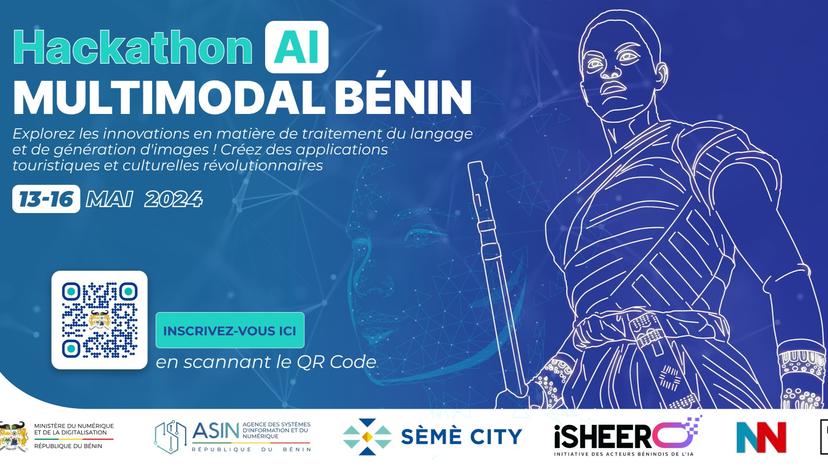
Ayaz Ali@ayaz_lakho658
is under improvement
is under improvement
🤝 Top Collabolators
🤓 Latest Submissions

Yoruba Image Synthesis - Multi-Modal Fusion
In this project, we confront the linguistic barriers faced by Yoruba speakers due to limited language resources. Image generation models primarily excel with English prompts, posing a challenge for non-English speakers. To address this, we embarked on a dual-track approach: data collection and model development. Firstly, recognizing the scarcity of Yoruba datasets, particularly in image generation prompts, we meticulously curated our own dataset. English sentences were carefully selected to serve as image generation prompts and then translated into Yoruba using a dictionary-based approach. Next, we developed a custom translator model trained specifically to translate Yoruba into English. This intermediary step ensures seamless integration with image generation models, allowing for smoother operation and accurate results. Through rigorous testing, we achieved an impressive 85% accuracy on the test set, affirming the efficacy of our approach. The core strength of our project lies in its ability to empower users to generate images in their native language without encountering language barriers. By collecting our own data and training custom models, we circumvent the limitations imposed by the scarcity of Yoruba resources. Leveraging the SDXL API for image generation further enhances the user experience, ensuring high-quality outputs. Looking ahead, we envision extending our efforts to include additional languages such as Fon and Dendi, expanding our dataset and catering to a broader audience. Furthermore, our ultimate goal is to develop a model capable of directly generating images from Yoruba, Fon, and Dendi without the need for translation into English. In summary, our project not only addresses a pressing need within the Yoruba-speaking community but also lays the groundwork for future advancements in multi-lingual image generation. Through our innovative approach, we pave the way for inclusive, barrier-free communication and creative expression.
16 May 2024

ezAGI easy Augmented Generative Intelligence
ezAGI {easy Augmented Generative Intelligence} provides a comprehensive framework to develop modular, scalable and efficient AGI. Integrating multiple AI models ezAGI handles API management efficiently while managing memory effectively for continuous reasoning and interaction without user intervention. Components of ezAGI include SocraticReasoning, AGI, FundamentalAGI, LogicTables, OpenMind, memory management and API key management with multi-model support.ezAGI seamlessly integrates models from Together, Groq, and OpenAI to enhance any LLM with Continuous Autonomous Reasoning. ezAGI creates short term memory as an input/reponse constant. Leveraging internal reasoning and logic ezAGI will autonomously create decisions based on data inputs and predefined rules. ezAGI is a comprehensive framework for developing autonomous modular AGI systems. SocraticReasoning.py implements socratic reasoning to add premises and challenging them to draw_conclusion. agi.py handles learning from data to make_decision by initializing AGI as a chatter instance. memory provides the abiltity to learn from environmental data and store dialogue as history. automind.py manages environment interaction and response generation to . logic.py handles logical variables and expressions, generates truth tables, and validates truths, supporting ezAGI's reasoning. openmind.py provides an internal reasoning loop for continuous AGI operation, adding prompts reasoned from premise into processed conclusions while autonomously saving internal reasoning. memory.py manages memory storage, ensuring organized and persistent storage of short-term, long-term, and episodic memories. api.py uses the dotenv library for secure API key management, allowing dynamic integration with AI services. chatter.py provides input-response mechanisms for a multi-model environment including together, groq, and openAI ensuring robust and logical response. ezAGI augments the intelligence of large language models.
21 Jul 2024

drAIML - Medical AI Consultant
Dr. AIML revolutionizes healthcare by integrating cutting-edge AI with precision, adaptability, and empathy. It leverages advanced APIs and technologies to deliver real-time medical consultations, personalized diagnostics, and ethical care anytime, anywhere. Dr. AIML interacts seamlessly with OpenAI, Llama3 Groq, and Together.ai APIs, enabling access to powerful language models and medical insights. Using python-dotenv, it securely manages API keys and environment variables for streamlined operations. The platform’s user interface is powered by NiceGUI, a FastAPI-based framework that ensures a responsive and user-friendly experience. Backend operations utilize aiohttp for high-performance asynchronous HTTP handling and asyncio for efficient concurrent processing. For data handling, Dr. AIML employs ujson for fast JSON processing and psutil for system-level process management, ensuring optimal performance. Additionally, Streamlit is used to create an interactive and engaging front-end experience for users. With its mission to provide accessible, accurate, and ethical healthcare, Dr. AIML combines state-of-the-art APIs, secure integrations, and advanced machine learning to redefine the future of medical consultation. It’s more than just AI; it’s a trusted partner in safeguarding human health.
26 Jan 2025

Attached Spin AIstronauts
Attach Spin Astronauts: A Spin-Launch Payload System Attach Spin Astronauts is a spin-launch payload system for manned orbital missions, using CrewAI and a browser-controlled agent to enhance efficiency and reduce carbon emissions. Five-Stage Mission Framework Spin Acceleration: A ground-based launcher propels the payload to high velocity, minimizing onboard propulsion needs. Orbital Insertion: The payload is guided into orbit with small thruster corrections. On-Orbit Stabilization: Attitude correction ensures readiness for docking. Rendezvous: A separately launched manned vehicle docks with the payload. Mission Execution: The payload is integrated into mission objectives. Supporting Programs Browser-Based Control: Real-time mission oversight and adjustments. Spin Launcher Optimization: AI-driven launch efficiency improvements. Orbital Navigation AI: Ensures stability and collision avoidance. Autonomous Docking: CrewAI agents enable seamless payload integration. Payload Utilization System: Manages deployment and mission execution. Development Process The project was designed using ChatGPT, followed by two CrewAI programs: one for Design Review and another for a Launch Press Release. Sora and Suno generated a video demo, and a Python Orbit Simulation was developed based on CrewAI’s redesign. Finally, Browser Use was assigned as the Launch Control Engineer, overseeing all programs. Advantages Cost-Efficient: Reduces reliance on chemical rockets. Eco-Friendly: Minimizes emissions for sustainable space exploration. Scalable: Adaptable for research and logistics missions. This innovative approach provides a lower-cost alternative to traditional launches, optimizing efficiency while supporting manned missions in space.
9 Feb 2025




.png&w=640&q=75)



